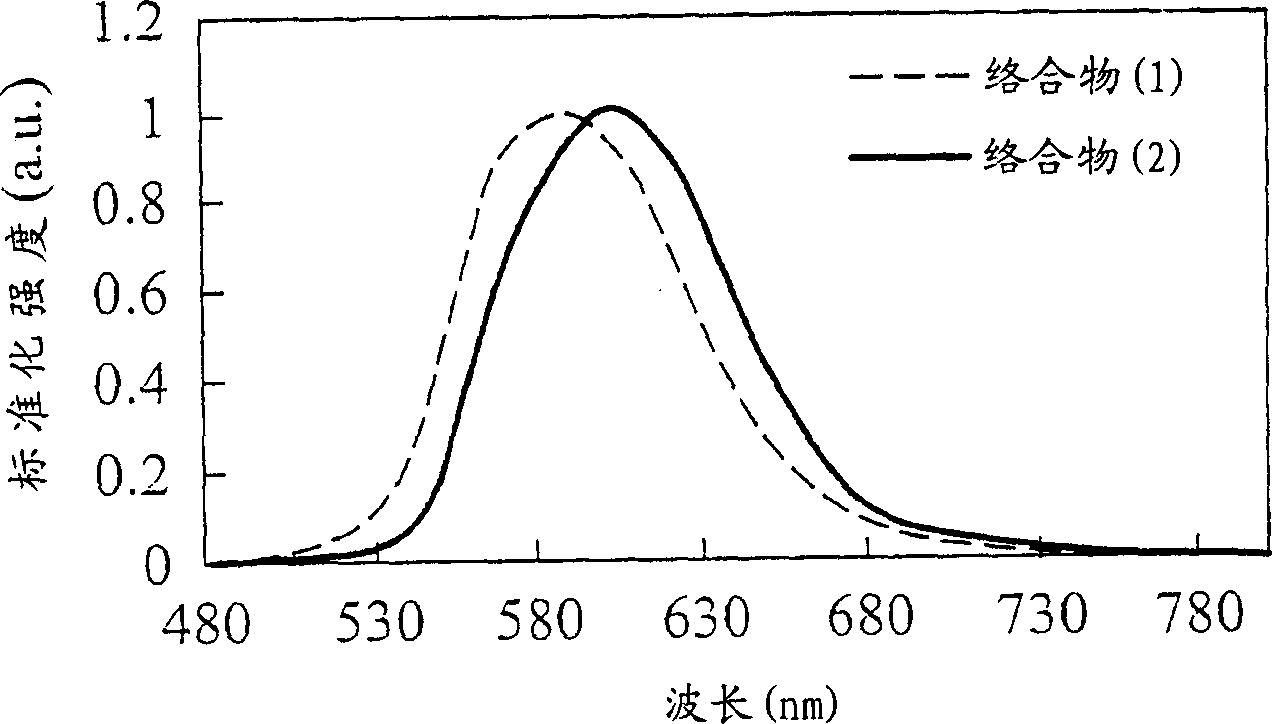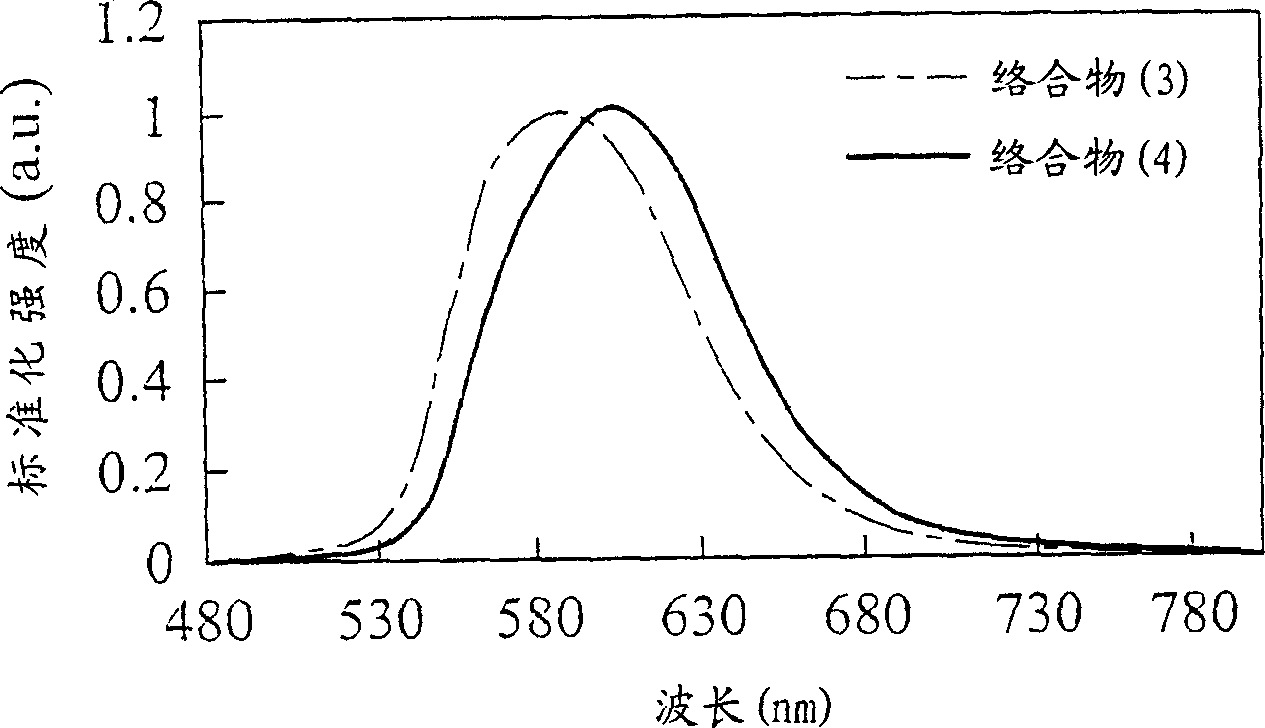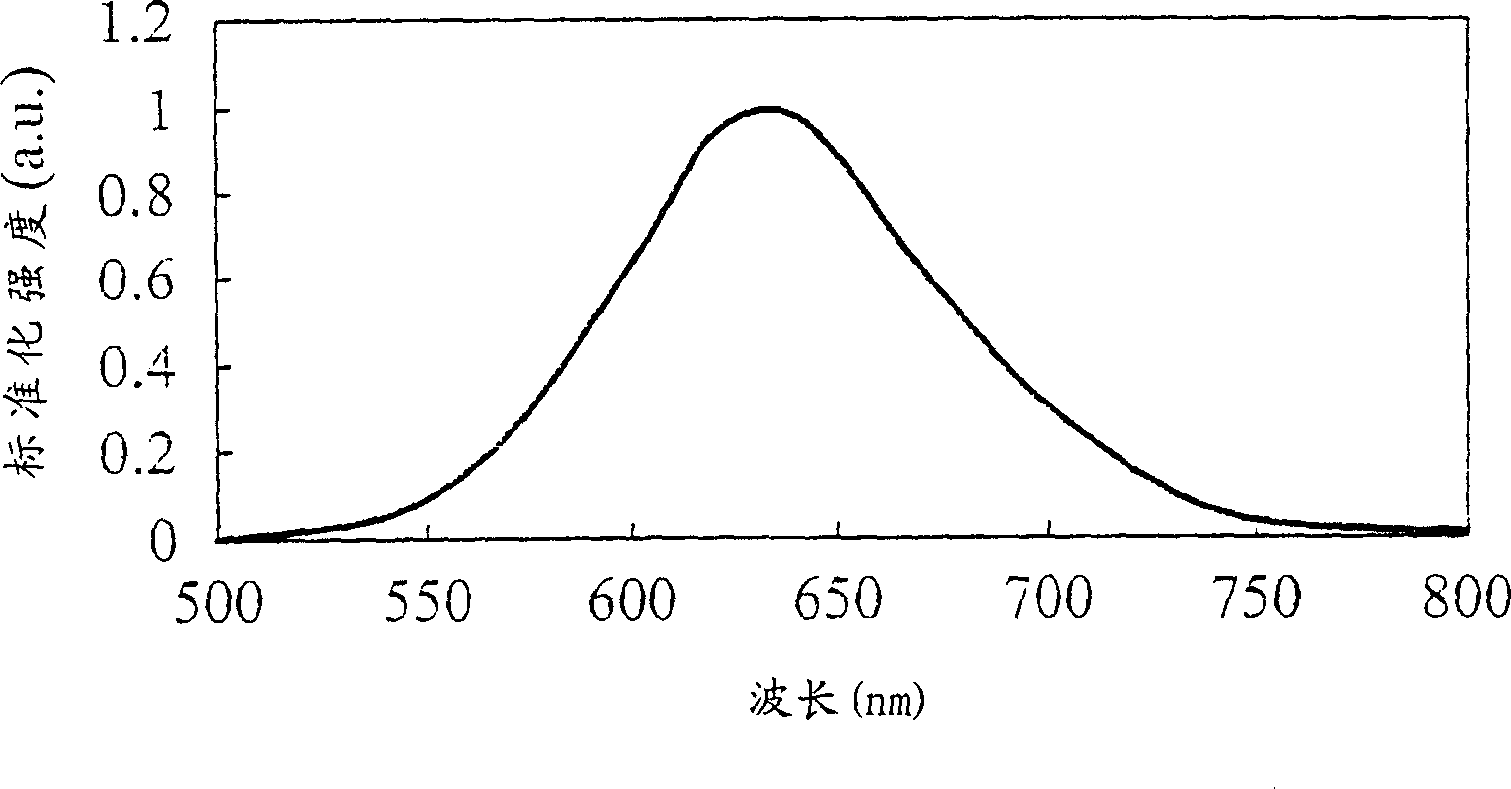Organometallic complex and organoelectric luminous device including said organometallic complex
An organometallic and complex technology, applied in the field of organic bimetallic complexes, can solve problems such as unseen organic electroluminescence devices, and achieve the effect of high yield and easy sublimation
- Summary
- Abstract
- Description
- Claims
- Application Information
AI Technical Summary
Problems solved by technology
Method used
Image
Examples
preparation example 1
[0032] Synthesis of 2-(2,4-difluorophenyl)pyridine (2-(2,4-difluoro-phenyl)-pyridine) ligand (46dfppy for short):
[0033] The synthetic route is as follows:
[0034]
[0035] Get 2,4-difluorophenylboronic acid (2,4-difluorophenyl boronic acid) (1.0g, 6.3mmol) and palladium diacetate (Pd(acetate) 2) (0.036g, 0.16mmol) and triphenylphosphine ( triphenylphosphine) (0.168g, 0.641mmol) dispersed in 2M K 2 CO 3 Aqueous solution (12mL) and 1,2-dimethoxyethane (1,2-dimethoxyethane) (6mL) solvent, add dropwise 2-bromopyridine (2-bromopyridine) (0.6mL, 6.33mmol) in the above reaction flask solution, reflux for 24 hours. After the reaction was completed, let it stand to cool to room temperature, and drain the solvent in the reaction bottle to obtain a yellow-brown solid, which was dissolved in an appropriate amount of water (60mL), and extracted with dichloromethane (50mL×2). Take the organic layer and reuse Na 2 SO 4 In addition to water, use the filter plate to remove Na 2 S...
preparation example 2
[0040] cyclometalated Pt(II)μ-chloro-bridge dimer[(46dfppy)Pt(μ-Cl) 2 Synthesis of Pt(46dfppy)]:
[0041] The synthetic route is as follows:
[0042]
[0043] Take potassium tetrachloroplatinate (II) (potassium tetrachloroplatinate (II)) (0.54g, 1.3mmol) and 2-(2,4-difluorophenyl)pyridine (2-(2,4-difluoro-phenyl)- pyridine) (0.52g, 2.73mmol) was dissolved in the mixed reagent of adding glycol ether / water=3:1 as a solvent, and after reflux reaction for 24 hours, after the reaction was completed, water (20mL) was added in the reaction flask, and A large amount of solids were precipitated, and the product was obtained by air suction and filtration. After repeated rinsing with water and n-hexane for many times, it was vacuum-dried to obtain a platinum metal two-body complex with a yield of 0.89g (1.07mmol, 82 %).
preparation example 3
[0045] cyclometalated Pt(II)μ-chloro-bridge dimer[(ppy)Pt(μ-Cl) 2 Synthesis of Pt(ppy)]:
[0046] Synthetic route:
[0047]
[0048] Potassium tetrachloroplatinate (II) (1g, 2.41mmol) was dissolved in a mixed reagent of ethylene glycol ether / water=3:1 as a solvent, and phenylpyridyl (phenylpyridyl) (1.12g, 7.23mmol) was added dropwise ), after reflux reaction for 24 hours, after the reaction is completed, add water (20mL) in the reaction bottle, a large amount of solids will be precipitated, and the product will be obtained by air suction and filtration. After repeated washing with water and n-hexane for many times , vacuum-dried to obtain a platinum double-body complex with a yield of 1.57 g (2.05 mmol, 85%).
PUM
 Login to View More
Login to View More Abstract
Description
Claims
Application Information
 Login to View More
Login to View More - R&D
- Intellectual Property
- Life Sciences
- Materials
- Tech Scout
- Unparalleled Data Quality
- Higher Quality Content
- 60% Fewer Hallucinations
Browse by: Latest US Patents, China's latest patents, Technical Efficacy Thesaurus, Application Domain, Technology Topic, Popular Technical Reports.
© 2025 PatSnap. All rights reserved.Legal|Privacy policy|Modern Slavery Act Transparency Statement|Sitemap|About US| Contact US: help@patsnap.com



